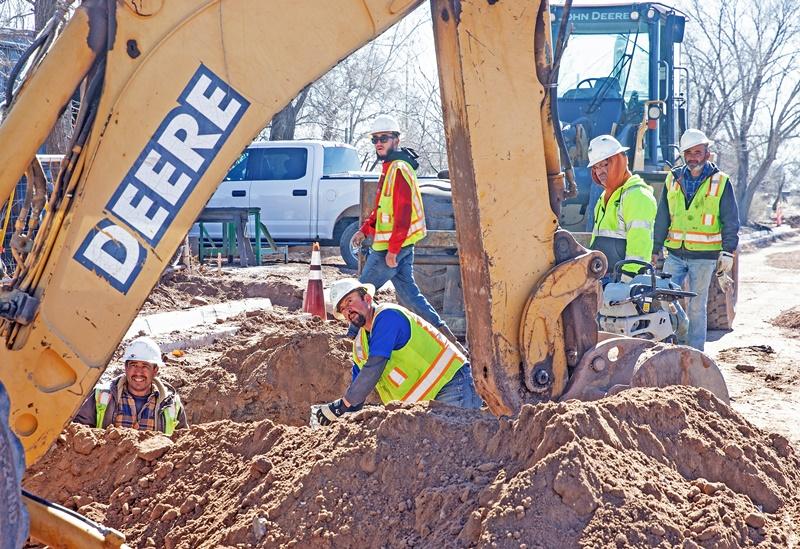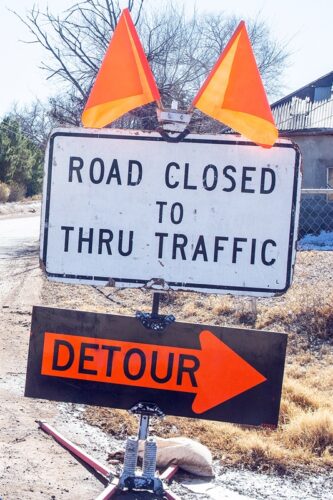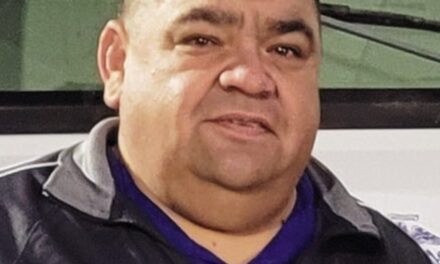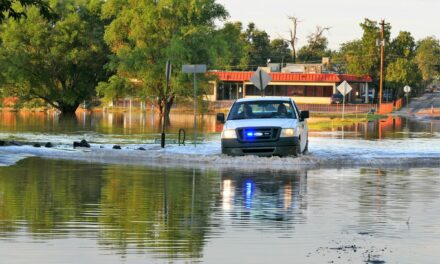
Workers dig up Cuba Road as part of a paving and drainage project.
Russell Huffman | El Defensor Chieftain photos
Although it may seem like forever to the 70 to 80 families living on Cuba Road, the paving and drainage work on Cuba Road is, according to city officials, proceeding on schedule. The long-term objective is reliable floodwater control, which involves several phases, explains City Administrator Donald Monette.
During heavy rainstorms, water flowing down arroyos from the west side of town ends up in southeast Socorro with nowhere else to go, Monette said.
“If you’ve ever driven on it in a snowstorm or a rainstorm, you know that entire street stays underwater. This portion of the project is to try to control some of that water on the lower part.”
An early stage of the project was the installation of a holding pond near the high school, just down from Highland Estates.
“This has to be a phased project because we can never get enough money to do it all at once,” Monette said. “So we do it year after year after year. We keep it on top of our awareness list.”
This year the city is asking for $1.4 million in Community Development Block Grant (CDBG) funds from the legislature on the ongoing $4.8 million project to repave the street as well as improve drainage in connection with the railroad culvert.
According to Monette, some of the culverts need to be enlarged, but the city needs permission from the railroad and the Middle Rio Grande Conservancy District to complete that work.
“When that happens, we will be able to put more water in the ditches. So it’s a pretty involved process.”
Key elements to relieve flooding are holding ponds, and Markland Road, which was never paved, could be used for a temporary holding pond.
“We’d have to put a pump station on the west side of I-25 on Cuba Road and then pump the water back over to Clark Field and build a second holding pond there,” he said. “There’s already a holding pond there, but with all this new water, we’d need an effective one. And it would slowly release back to the railroad track and into the ditch. But again, this is a lot of money and a lot of time, and a lot of effort.
“Eventually, we need to get the holding pond water underneath the railroad tracks and into the green ditch again,” he said. “But once again, we have to go through the railroad and Conservancy to get their permission.
On its next CDBG application, the city will request money to build infrastructure that could capture some of the water before it reaches the lower part of Cuba Road.
“We have to work with the highway department because the lift station – the pump station – would be on their right-of-way.

Going around work on Cuba Road.
“Even if we get all that accomplished, if we don’t have large enough culverts to get underneath the railroad to the ditch, it’ll still be backed up,” he said. “So the ultimate goal is to get all that done and have culverts underneath the railroad and get that water to the ditch. But again, there would have to be a lot of coordination between all the agencies involved—the highway department, the railroad and the conservancy.”
Monette added that doing the project for Cuba Road “also helps the county residents that are further south of there.”
Otherwise, the current phase of the Cuba Road street project started in October.
“On the existing project we’ve got going on right now, they’ve already installed 90 percent of the curb and gutter,” General Services Director Lloyd Martinez said. “The water department had gone in and replaced the four-inch water line with a brand-new six-inch water line. And the gas line had to be lowered by the gas department.”
Martinez said underground utilities customarily get updated prior to making improvements on a roadway. The city asked TDS, which is building fiber infrastructure in Socorro, to put fiber in before city workers rebuild the street.


















